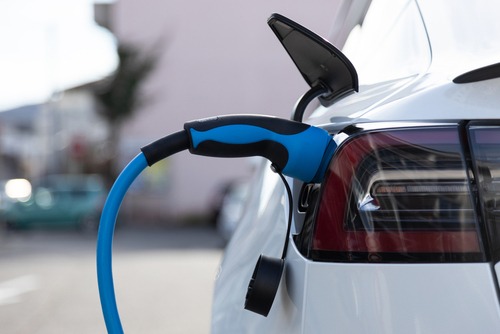PG&E reports strong growth in EV charging access and infrastructure

Pacific Gas and Electric Company (PG&E) has now installed 4,827 Level 2 electric vehicle (EV) charging ports at customer sites throughout Northern and Central California through its EV Charge Network program and other initiatives in an effort to limit greenhouse-gas emissions from the transportation sector.
“Expanding the use of electric vehicles is essential for California to achieve its bold climate and clean-air goals,” PG&E’s Laurie Giammona, senior vice president of Customer Care, said.
Through the EV Charge Network, the company’s first EV charging infrastructure program, PG&E has partnered with businesses at 192 locations and with 11 EV charging companies throughout its service area. Through September 2021, PG&E has enabled charging for 5.5 gigawatt-hours of electricity, equivalent to over 1,400 traditional cars being taken off the road for a year. For this program, PG&E paid for and built the necessary electrical infrastructure at each customer site. Also, with 39 percent of the new chargers located in disadvantaged communities, PG&E helped to bring EV charging options to customers who might not have had them before.
“PG&E’s program has helped lead to the rapid adoption of electric vehicles for our residents here at Wolf Creek Lodge,” said Bob Miller, EV project lead at Wolf Creek Lodge, a cohousing community, where PG&E installed 30 EV charging ports through the EV Charge Network program. “We are proud to be among those setting the pace in Grass Valley for electric vehicle use and the resulting reduction in carbon emissions.”
PG&E said it remains committed to increasing access to charging in locations where it has traditionally been limited and where cars often sit for longer periods of time, like workplaces, apartment buildings and condominiums.
“PG&E is thrilled to bring EV access to more customers through our first EV charging infrastructure program and we will continue to be an active partner in helping make EVs an option for millions of Californians,” Giammona said. “Reducing vehicle emissions is good for our state and good for the environment.”
PG&E also has an initiative called the EV Fleet program, which aims to install or rebate make-ready electrical infrastructure at 700 sites by 2024 to support the adoption of 6,500 medium- and heavy-duty electric vehicles. Further, the company has an EV Fast Charge program for public fast chargers through which is seeks to install more than 50 plazas for DC fast charging in highway corridor and urban sites. In addition, PG&E offers various special rates, rebates and tools to facilitate greater EV adoption.
